

Is your kitchen makeover project becoming a financial headache? Creating a budget can seem overwhelming, but it doesn’t have to be. This article will guide you through setting a realistic budget, choosing cost-effective design strategies, and exploring financing options that fit your needs. By following these steps, you will gain clarity on your spending and find ways to maximize savings. Don’t let financial concerns hold you back from achieving your dream kitchen; instead, let this guide provide the solutions you need to simplify your kitchen makeover financial plan.
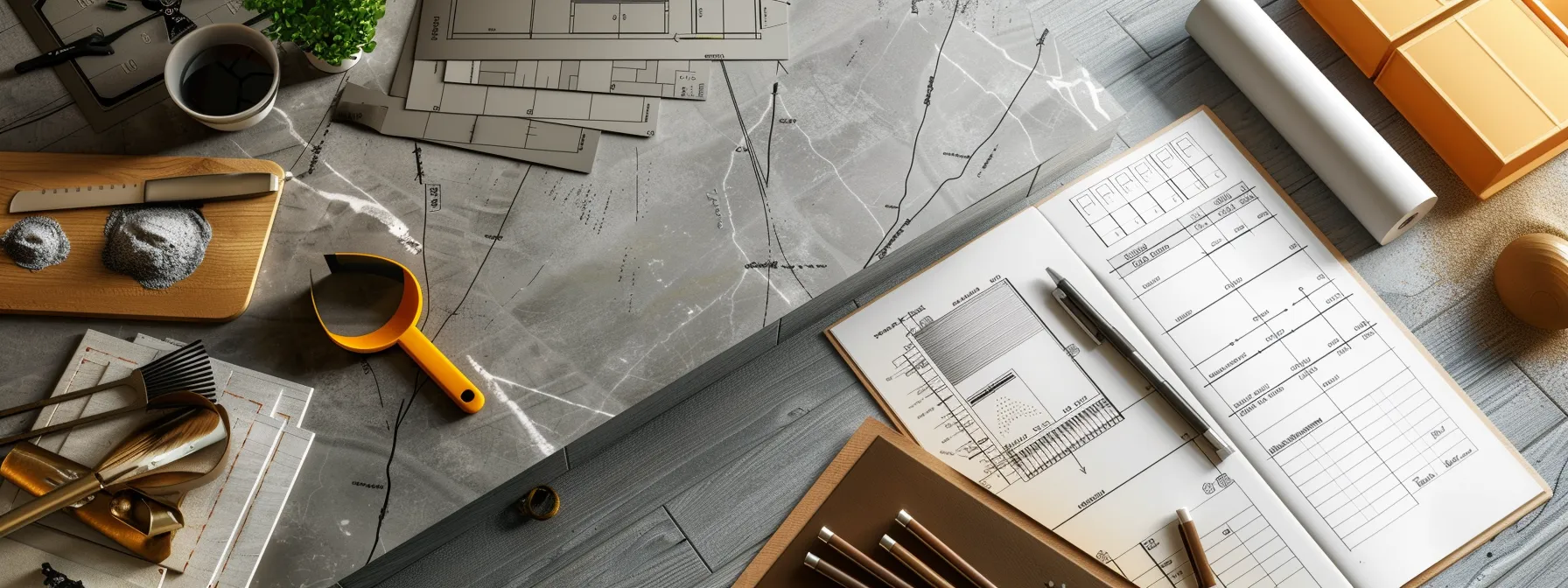
Developing a realistic budget for a kitchen makeover involves careful consideration of both essential and optional costs, such as cabinetry, countertops, and lighting. Researching material prices and labor charges is crucial for accurate financial planning. Allocating funds for unexpected expenses and setting a clear timeline helps manage resources effectively. Utilizing budgeting tools will assist in tracking expenses, allowing for necessary adjustments as project scope changes.
Identifying both essential and optional renovation costs is a key step in creating a realistic budget for a kitchen makeover. Essential items typically include cabinetry, countertops, and a new sink, as these elements significantly impact functionality and aesthetics. Optional upgrades, such as decorative crown molding or stylish tile backsplashes, can enhance the overall look but should be considered based on individual preferences and available funds.
A practical approach involves listing all potential expenses associated with the kitchen makeover. This includes estimates for both the basic elements and optional features, helping homeowners prioritize their needs. By carefully assessing costs for oak cabinetry or premium tile choices, they can make informed decisions that align with their budgetary constraints. For clarity, the following table summarizes essential and optional costs for a kitchen renovation:
Conducting thorough research on material prices is crucial for establishing an accurate kitchen remodel cost breakdown. Homeowners should compare options like particle board versus hardwood cabinets, as the latter typically offers greater durability but at a higher price. Understanding these differences not only aids in selecting the right materials, but also ensures that homeowners can align their choices with their budget and design preferences.
In addition to materials, evaluating labor charges is essential in the planning phase. Hiring a general contractor or an electrician brings expertise to the project, helping to avoid costly mistakes. By obtaining multiple quotes and discussing project scopes with these professionals, homeowners can gain a clearer understanding of potential expenses and make informed decisions that fit their financial plan.
Allocating funds for unexpected expenses is a vital part of a kitchen makeover budget. Homeowners should set aside roughly 10% to 20% of their total budget to cover any surprises that may arise, such as structural issues hidden behind cabinetry or problems with existing plumbing. These additional expenses can disrupt the project timeline and financial plan, making it essential to have a cushion that allows for flexibility in the renovation process.
For instance, while developing a floor plan, homeowners might focus on aesthetics, but hidden issues such as a ceiling that needs repairs or outdated electrical systems may emerge once the work begins. By anticipating these potential expenses, individuals can proceed confidently with their kitchen upgrade, allowing them to enjoy the cooking space without financial strain. Here’s a summary table to help visualize the budget considerations:
Establishing a clear timeline can significantly enhance the management of financial resources during a kitchen renovation. By breaking the project into phases, homeowners can more effectively control the kitchen renovation cost breakdown. For instance, they might allocate specific weeks for selecting materials such as stainless steel appliances, marble countertops, or linoleum flooring, allowing for an organized approach to spending while ensuring they stay within budget.
Moreover, a timeline helps homeowners anticipate when payments are due, ensuring that funds are available when required. This allows for timely purchases, such as an oven or cabinets, without the stress of scrambling for cash unexpectedly. By planning ahead, individuals can avoid overspending and ensure that their kitchen makeover remains a pleasurable experience, not a financial burden:
Using budgeting tools effectively can streamline the financial planning process for a kitchen makeover. Homeowners can utilize apps and spreadsheets to monitor expenses related to essential items like quartz countertops and cabinetry, ensuring that every dollar is accounted for. By tracking each cost in real-time, homeowners can quickly identify if they are on track with their budget or if adjustments are necessary, enabling better management of funds throughout the home improvement project.
Moreover, these tools offer valuable utility for do-it-yourself enthusiasts who wish to remain organized during their renovations. Budgeting tools can help clarify costs associated with specific tasks, such as purchasing materials or hiring professional help. By providing visuals of spending and remaining funds, homeowners can make informed choices, ultimately transforming their kitchen into a beautiful and functional room without overspending.
When planning a kitchen makeover, it is essential to adjust the budget according to changes in project scope. For instance, if the decision is made to upgrade to a more expensive cooktop or replace the flooring for improved aesthetics, this can significantly affect overall costs. Homeowners should always prioritize the return on investment; understanding how these modifications can enhance the kitchen’s value is crucial for making informed financial decisions.
In addition to upgrades, unforeseen issues like roof repairs or other structural concerns may arise during the renovation process. These unexpected fees can disrupt the original budget and must be accounted for promptly. By remaining flexible and ready to reassess financial allocations, homeowners can maintain control over their project’s budget, ensuring that it aligns with their vision while also addressing any necessary changes that emerge along the way.
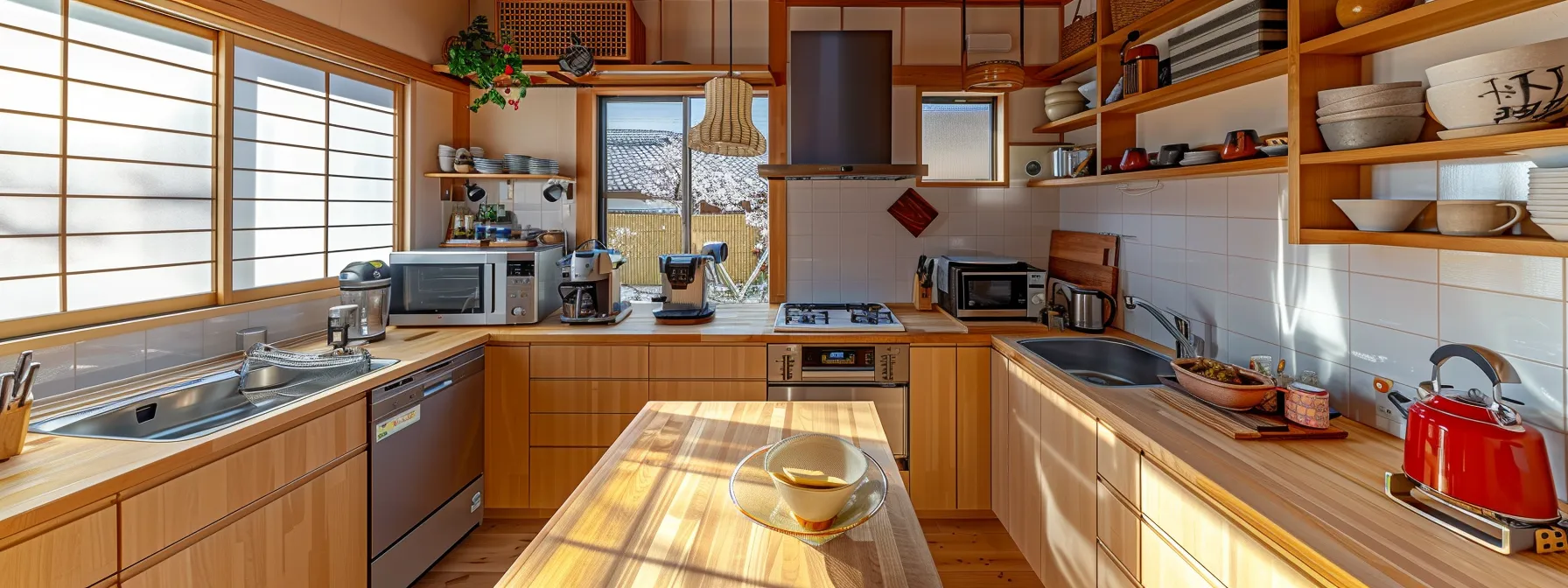
Analyzing different kitchen layouts can maximize efficiency while saving costs in a kitchen remodel. Sourcing affordable materials, like butcher block countertops, ensures quality without breaking the bank. Energy-efficient appliances not only lower operational expenses but enhance the kitchen’s value. Additionally, considering DIY projects reduces labor costs, and reusing existing fixtures minimizes replacements. Prioritizing improvements with the highest return on investment solidifies a strategic financial plan during construction.
Choosing an efficient kitchen layout not only improves functionality but can also lead to significant cost savings. For instance, creating a U-shaped or L-shaped design often maximizes the workspace, allowing for better organization of essential appliances like a microwave oven and minimizing unnecessary alterations to existing plumbing or electrical setups. This strategic arrangement can help homeowners avoid expensive modifications while ensuring easy access to drawers and cabinets.
Incorporating elements such as pendant lighting can enhance aesthetic appeal without major expenses. A well-planned layout focusing on zones—such as cooking, cleaning, and prep areas—streamlines workflow. Additionally, opting for materials that are resistant to stains can substantially reduce maintenance costs over time. Homeowners can benefit from this information, guiding them toward practical solutions and potentially lowering their renovation budgets:
Finding affordable materials that maintain quality is essential in kitchen remodeling. Utilizing hardwood options for cabinetry can provide durability and an attractive finish while avoiding cheaper alternatives that may succumb to water damage over time. Many homeowners opt for high-quality laminate materials that mimic the look of wood without the hefty price tag, ensuring style and resilience in their kitchen space.
Homeowners can also consider sourcing discounted or surplus materials, such as tiles and countertops, from local suppliers or closeout sales. These options not only help reduce costs but also allow for unique choices that stand out. Prioritizing materials that provide long-term value — like water-resistant finishes for surfaces near the sink or wood options that endure — ensures the kitchen remains functional without compromising on aesthetics or budget:
Investing in energy-efficient appliances, such as a dishwasher or refrigerator, can lead to significant long-term savings on utility bills. Homeowners can compare the price of these appliances against traditional models to evaluate potential savings over time. For example, selecting an Energy Star-rated dishwasher not only reduces water consumption but also decreases energy use, making it a smart choice for both the kitchen and bathroom remodels.
Moreover, energy-efficient appliances are often highlighted by design programs like HGTV for their ability to enhance a home’s value while providing practical benefits. By incorporating these units along with stylish kitchen cabinets, homeowners can achieve a modern look without sacrificing efficiency. Ultimately, the choice of energy-efficient appliances can streamline financial planning for a kitchen makeover, ensuring that quality and savings go hand in hand:
Engaging in do-it-yourself (DIY) projects can significantly reduce labor expenses during a kitchen makeover. Homeowners can take on tasks such as painting the walls or installing a new kitchen hood, which are often straightforward yet impactful. By investing time into these projects, individuals can achieve a fresh look without incurring the average costs associated with hiring professionals, making the financial plan more manageable.
Moreover, incorporating DIY elements like tiling with ceramic materials for backsplashes not only adds character but also allows for creative expression at a lower cost. Homeowners who feel comfortable with tools and basic design can save money while transforming their kitchens into functional and stylish spaces. This approach not only enhances the overall budget but also fosters a sense of accomplishment as they see their vision come to life.
Reusing existing fixtures can significantly lower kitchen reno costs while maintaining functionality and style. For example, keeping previously installed cabinetry and simply updating the hardware or adding a fresh coat of paint offers a cost-effective solution. Homeowners can also retain features like a pantry that works well, focusing funds on elements like pendant lights that enhance visual appeal without the need for extensive renovations.
Integrating existing elements seamlessly into the new design can simplify the kitchen makeover financial plan. By selecting a drywall color that complements reused fixtures, homeowners can create a cohesive look that feels intentional. Making such choices allows individuals to stay within budget while achieving a modern kitchen space that meets their practical needs and aesthetic preferences.
When planning a kitchen makeover, focusing on improvements with the highest return on investment (ROI) can significantly influence financial outcomes. Features such as modern appliances, updated cabinetry, and efficient countertop materials often yield the best returns, making the kitchen not only more functional but also more appealing to future buyers. Homeowners should consider the overall impact of these upgrades, as they enhance everyday usability and add considerable value to the home.
Investing in energy-efficient appliances, for example, can lower utility bills while also appealing to environmentally conscious buyers. Similarly, enhancing the visual appeal of the kitchen through quality cabinetry or attractive countertops can elevate the space’s overall aesthetic, ensuring that the investment pays off when it comes time to sell. By strategically prioritizing these key elements, homeowners can achieve a beautiful kitchen that aligns with their financial goals and lifestyle needs.
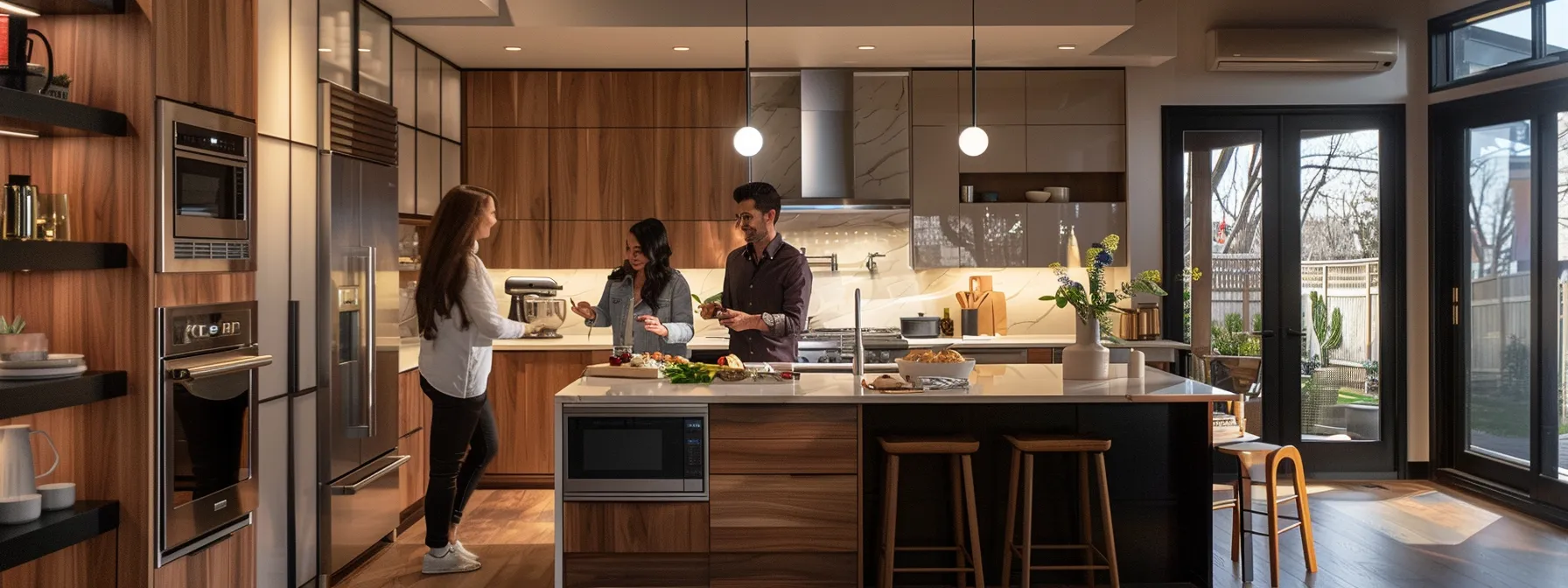
Evaluating personal savings and cash options is crucial when planning a kitchen makeover. Homeowners should compare various loan options suitable for renovation projects and research home equity lines of credit for larger renovations. Exploring zero-interest credit offers for supplies and understanding government incentives for energy-efficient upgrades can further enhance financing strategies. Additionally, assessing payment plans with contractors can create better cash flow, making the remodel more manageable.
Homeowners looking to finance their kitchen makeover should first evaluate personal savings and cash options. Having a solid understanding of available funds will provide a clearer picture of what can be accomplished without incurring debt. For instance, individuals might consider setting aside a portion of their monthly income or utilizing savings specifically earmarked for home renovations, allowing for a more straightforward budgeting process.
In addition to personal savings, cash options such as zero-interest credit offers or small loans can be helpful in managing renovation expenses. Opting for affordable financing that matches one’s budget prevents strain during the project. For example, homeowners can explore options like short-term loans that cater to home improvements, ensuring they align with their overall financial strategy when planning their kitchen makeover:
When planning a kitchen makeover, homeowners should closely examine different loan options available for financing their projects. Traditional personal loans may offer relatively lower interest rates, allowing individuals to cover a range of renovation costs without impacting their cash flow too much. On the other hand, a home equity line of credit (HELOC) can provide access to funds based on the equity built in their property, which homeowners can draw from as needed, making it a versatile solution for managing expenses throughout the remodel.
Additionally, exploring specialized renovation loans can help streamline the financing process for homeowners. These loans often bundle the costs of purchasing the home with the expense of renovations, allowing them to finance the kitchen makeover through their mortgage. Homeowners should carefully evaluate the terms of each loan type, comparing interest rates and payment plans, to find the most suitable choice that aligns with their financial plans and renovation goals.
Home equity lines of credit (HELOC) offer a flexible financing option for homeowners seeking to undertake larger renovations like a kitchen makeover. This type of credit allows individuals to borrow against the equity they have built in their homes, providing access to funds as needed. By researching various lenders and comparing interest rates, homeowners can find a suitable HELOC that aligns with their financial goals, ensuring they can effectively manage renovation costs.
Using a HELOC for a kitchen renovation can simplify the financial process, especially when unexpected expenses arise during the project. Homeowners can draw funds as necessary, allowing them to cover costs for materials or labor without feeling financially strained. This flexibility enables individuals to focus on creating their ideal kitchen, ensuring that the financial aspect of the makeover remains manageable and aligned with their overall budget.
Homeowners planning a kitchen makeover should consider the advantages of zero-interest credit offers for purchasing supplies. These financial options are designed to ease the burden of immediate costs, allowing individuals to acquire essential materials without incurring extra charges. By strategically utilizing these credit offers, homeowners can manage their remodeling expenses more effectively, ensuring they have the necessary funds available when they need them.
For example, many home improvement stores provide promotional financing on certain appliance purchases or material orders. Utilizing these offers can allow homeowners to make necessary purchases upfront while spreading payments over time without added interest. This approach not only simplifies the financial planning process but also ensures that the kitchen renovation stays within budget, ultimately leading to a successful transformation of the space.
Homeowners should take the time to research government incentives available for energy-efficient upgrades during their kitchen renovations. Programs often provide tax credits, rebates, or grants for installing high-efficiency appliances, energy-saving lighting, and improved insulation. By leveraging these financial incentives, individuals can lower the overall costs of their kitchen makeover, making their upgrades more affordable and environmentally friendly.
Incorporating energy-efficient appliances not only enhances the kitchen’s functionality but may also lead to long-term savings on utility bills. Homeowners can benefit from understanding local and federal programs that support their efforts to create a more sustainable living space. Engaging with these incentives allows for smarter financial planning and can transform a kitchen improvement project into an investment that pays off immediately and in the future.
Assessing payment plans with contractors can significantly enhance cash flow management during a kitchen makeover. Homeowners should openly discuss payment structures with their contractors to create a plan that aligns with their financial situation. Options may include installment payments based on project milestones, which allow individuals to pay in manageable chunks rather than a lump sum upfront.
By negotiating terms, homeowners can ensure that the payment schedule fits within their budget, reducing financial strain during the renovation process. For instance, aligning payments with key project phases, such as material delivery or completion of installation, provides clarity and makes it easier to manage cash resources effectively. A solid understanding of these payment plans can help homeowners navigate their kitchen remodel without overspending:
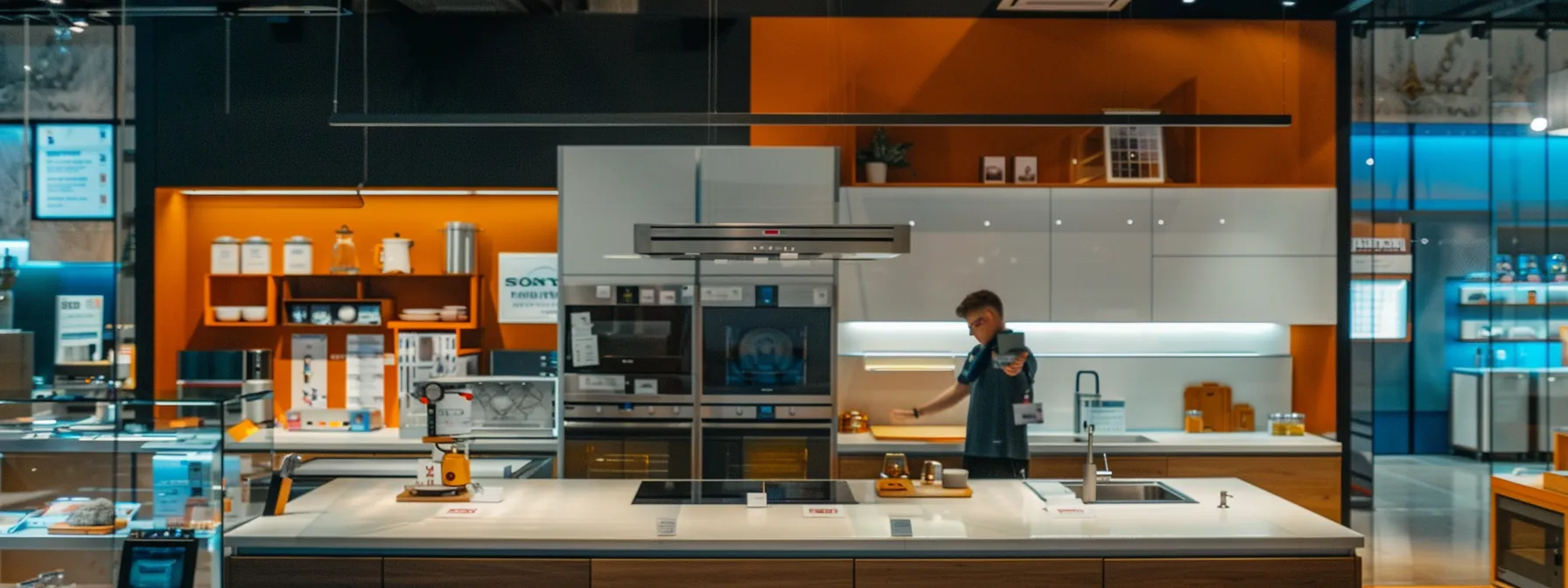
Utilizing smart shopping techniques can significantly reduce costs during a kitchen makeover. Homeowners can use coupons and promotional deals to lower expenses, shop during off-peak seasons for discounts on materials, and explore online forums for second-hand supplies. Additionally, visiting warehouse stores for bulk purchasing, networking with local artisans for competitive rates, and comparing prices across multiple retailers will further enhance savings.
Using coupons and promotional deals is an effective strategy for homeowners looking to lower costs during a kitchen makeover. Home improvement stores often provide discounts through flyers, websites, or apps, making it easier to find savings on essential items like cabinetry, countertops, and appliances. By taking the time to collect these offers, individuals can make significant cuts to their overall renovation expenses.
Additionally, signing up for newsletters from local suppliers or home renovation websites can provide exclusive access to special promotions. These discounts can include seasonal sales and clearance events, offering opportunities to purchase high-quality materials at a fraction of the usual price. Homeowners looking to streamline their budget should consider the following tips for maximizing savings:
Shopping during off-peak seasons offers homeowners a unique opportunity to secure substantial discounts on kitchen materials. Many suppliers reduce prices during slower sales periods, such as winter or early spring, making it an ideal time to purchase items like cabinets, countertops, and appliances at a lower cost. By planning the renovation during these times, individuals can maximize savings, helping them stay within budget while enhancing their kitchen space.
Additionally, off-peak shopping allows homeowners to take advantage of less crowded stores, facilitating a more focused selection process for essential materials. With personalized service, customers can receive better advice from sales staff and potentially uncover exclusive promotions not available during peak seasons. This strategic approach ensures that every dollar spent contributes to creating the dream kitchen without straining the overall financial plan.
Joining online forums can be an excellent strategy for homeowners looking to discover second-hand kitchen supplies while undertaking a kitchen makeover. These platforms often host communities where individuals share their experiences, advice, and listings for used materials. By engaging with fellow renovators, homeowners can find deals on items like cabinets, countertops, and appliances that may still be in great condition but are available at a fraction of the retail price, thus significantly reducing overall renovation costs.
Moreover, participating in these forums allows homeowners to ask questions and gain insights about the renovation journey. Members often share tips on where to find specific items, local sales, and even DIY tricks to make the most of purchased supplies. This collective knowledge can empower homeowners to make informed decisions, ensuring their kitchen makeover aligns with both their financial plan and aesthetic goals without the burden of overspending.
Visiting warehouse stores can be a game-changer for homeowners planning a kitchen makeover, as it allows for bulk purchasing of essential materials at reduced prices. These stores typically provide discounts on large quantities of items like cabinetry, appliances, and flooring, making it easier to stick to a budget while not compromising on quality. By buying in bulk, homeowners can take advantage of significant savings, ensuring they get more value from their financial plan.
In addition to lower prices, warehouse stores often have a wider selection of items, which enables homeowners to find unique products that suit their design vision. It’s important to consider the potential for creating a cohesive look by selecting complementary materials and fixtures. For example, purchasing multiple sets of cabinets or bulk tile can enable smoother installation and less waste, further benefiting the overall kitchen renovation budget:
Networking with local artisans is a strategic way for homeowners to secure competitive rates while undertaking a kitchen makeover. Many artisans offer unique craftsmanship and personalized service that can lead to superior results without the premium prices often associated with larger companies. By engaging directly with these professionals, homeowners can not only negotiate rates but also explore tailored solutions that fit their specific aesthetic and budget needs.
Furthermore, local artisans often have a deep understanding of the materials and design trends within the community, enabling them to provide valuable insights that enhance the overall renovation experience. This connection allows homeowners to acquire quality work at reasonable prices, reducing the financial burden of their kitchen projects. In addition, fostering these relationships can lead to ongoing support for future renovations, creating a beneficial partnership for all parties involved.
Comparing prices across multiple retailers is a crucial step for homeowners looking to simplify their kitchen makeover financial plan. By examining prices from different sources, individuals can identify the best deals on necessary items, such as cabinetry and countertops, thereby maximizing their budget. This approach not only helps in securing lower costs but also enables homeowners to assess the quality of products available in the market.
In addition to saving money, this practice empowers homeowners to make informed decisions regarding their purchases. Utilizing apps or websites that specialize in price comparisons can streamline this process, providing real-time data on fluctuations in costs. Ultimately, taking the time to research and compare prices ensures that individuals can complete their kitchen renovation without exceeding their financial limits:
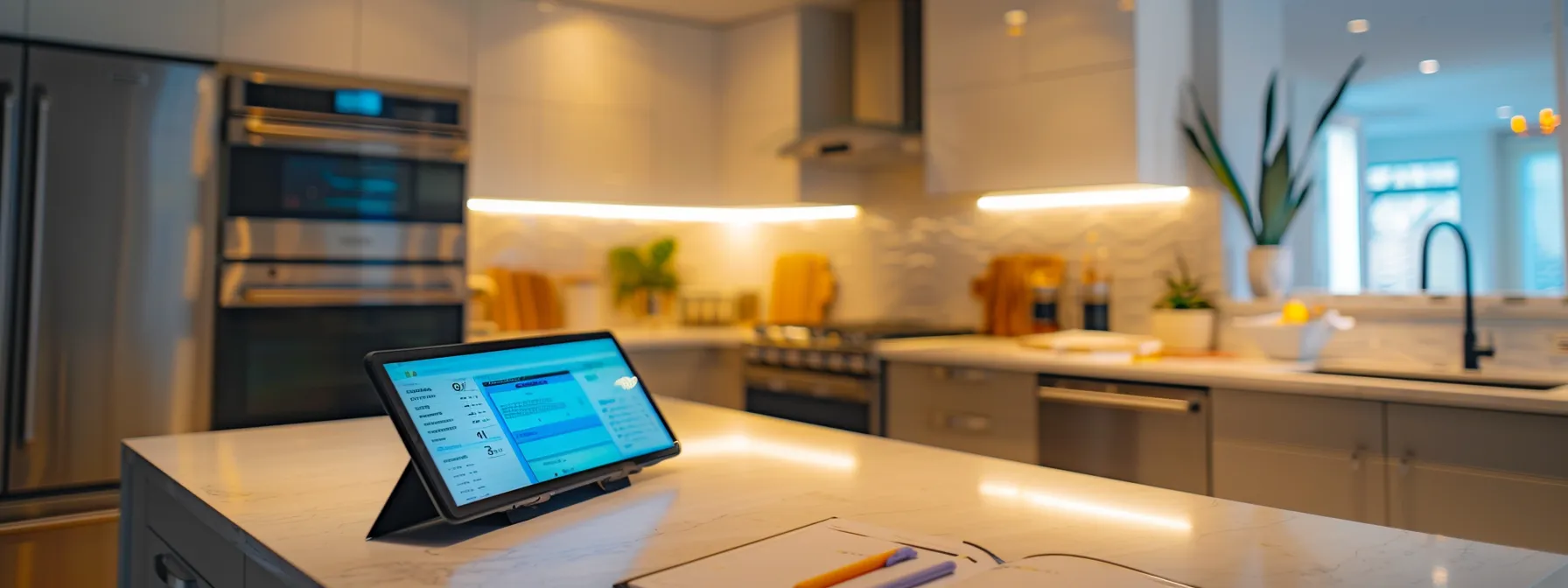
To simplify a kitchen makeover financial plan, homeowners should consistently track expenses against their budget. Documenting each purchase helps prevent overspending, while adjusting the plan based on current financial status ensures better control over costs. Regular communication with contractors about expenses keeps the project on track, and utilizing apps aids in organizing finances efficiently. Celebrating small milestones can provide motivation throughout the remodeling journey.
Tracking expenses against the budget regularly is a fundamental step in maintaining financial clarity during a kitchen makeover. Homeowners benefit from closely monitoring each purchase related to materials, labor, and unexpected expenses as this practice helps prevent overspending. By using budgeting apps or simple spreadsheets, individuals can see where their funds are allocated and make timely adjustments when required to keep the project on track.
Furthermore, consistent tracking allows homeowners to identify spending patterns and potential areas where they might save money. For example, if they notice they are exceeding costs on decorative items, they can reevaluate the necessity of those purchases and possibly shift focus to essential improvements. This proactive approach not only helps maintain a balanced budget but also reduces stress during the renovation process, allowing for a smoother and more enjoyable experience overall.
Documenting each purchase during a kitchen makeover is essential to maintain control over spending and stick to a budget. Homeowners can use simple spreadsheets or dedicated budgeting apps to log expenses as they occur, helping them track where and how their funds are allocated. This practice not only prevents overspending but also provides clarity on ongoing costs, allowing for timely adjustments if necessary.
By consistently documenting purchases, homeowners can more easily identify spending trends and make informed decisions about future expenditures. For instance, if they realize that they are overspending on decorative items versus essential materials, adjustments can be made to ensure alignment with their financial plan. This proactive approach fosters a more organized and stress-free renovation process, enabling individuals to effectively manage their kitchen makeover budget while achieving their desired results.
Adjusting the kitchen makeover plan based on current financial status is vital for successful budgeting. Homeowners should regularly evaluate their spending and assess whether they are on track with their budget. If costs begin to overrun, it may be necessary to modify certain design choices or postpone non-essential upgrades to maintain financial control.
For instance, if unexpected expenses arise, such as repairs to plumbing or structural issues, homeowners can prioritize essential elements like cabinetry over decorative features. This proactive approach not only helps to stay within budget but also ensures that the kitchen remodel remains aligned with their financial capabilities while achieving a desirable outcome.
Regular communication with contractors about expenses plays a crucial role in maintaining control over a kitchen makeover budget. Homeowners should establish a clear line of dialogue from the start, discussing anticipated costs and potential fluctuations as the project progresses. This ongoing conversation helps to ensure that any unexpected expenses are addressed promptly, preventing surprises that could derail financial plans.
Furthermore, by keeping contractors informed about budget constraints, homeowners can work together to find cost-effective solutions. For instance, if overspending occurs in one area, a contractor may suggest alternatives or adjustments that maintain the project’s integrity while saving costs. This collaborative approach not only smooths the renovation journey but also empowers homeowners to make informed financial decisions throughout the process.
Utilizing budgeting apps can significantly aid homeowners in organizing their finances during a kitchen makeover. These tools allow individuals to track expenses in real-time, ensuring they stay within their financial limits while monitoring spending on essential materials and labor. By accessing features that categorize costs, homeowners can quickly identify areas where adjustments may be necessary, promoting more effective budget management throughout the renovation process.
Furthermore, many budgeting apps provide customizable alerts and reminders, which can help keep homeowners informed about upcoming payments or financial milestones. By setting up these notifications, individuals can prepare for expenses and avoid last-minute financial strain. With an organized approach facilitated by technology, the kitchen makeover journey can become less stressful, allowing homeowners to focus on executing their vision rather than worrying about their budget.
Celebrating small milestones during a kitchen makeover can greatly impact overall motivation and financial management. As homeowners complete each phase of their renovation, such as finalizing the cabinetry or selecting countertops, acknowledging these achievements can provide a sense of progress and fulfillment. This approach not only fosters excitement but also reinforces their commitment to staying within budget while achieving their vision.
Recognizing these milestones also serves as an opportunity to review spending and ensure alignment with the financial plan. For instance, after successfully purchasing appliances at a discount, homeowners can reflect on their budgeting skills and adjust future purchases accordingly. By maintaining a positive mindset through these celebrations, individuals can enjoy a more satisfying renovation experience while effectively managing costs throughout the kitchen makeover.

After completing a kitchen makeover, homeowners should assess the value increase of their home, set aside a maintenance budget for future upkeep costs, and review the financial impact of the renovation. Planning for potential energy savings after upgrades and exploring how to utilize the newly remodeled space can maximize benefits. Additionally, developing a strategy for reselling the home if necessary is crucial for future financial planning.
Assessing the value increase of a home after a kitchen renovation is essential for homeowners looking to maximize their investment. Upgraded features such as modern appliances, quality cabinetry, and functional layouts can add significant value to the property. Homeowners who take the time to research local market trends can gain insight into how their renovations may impact the overall worth of their home, helping them evaluate the return on investment.
Understanding the financial implications of a kitchen makeover allows homeowners to make informed decisions about future renovations or resale strategies. Home improvements often enhance livability and aesthetic appeal, which can attract potential buyers in the competitive real estate market. By recognizing the value enhancements, homeowners can strategically manage their investments and ensure their remodel aligns with long-term financial goals.
Setting a maintenance budget for future upkeep costs is an essential part of managing finances after a kitchen makeover. Homeowners should consider factors such as routine maintenance, appliance replacements, and potential repairs when establishing this budget. For example, allocating funds for periodic checks on plumbing and electrical systems can prevent costly emergencies down the line.
Additionally, anticipating expenses related to cleaning products, countertop maintenance, or even flooring care can help homeowners sustain the beauty and functionality of their remodeled kitchen. By setting aside a predetermined amount each month specifically for these upkeep costs, individuals can ensure their investment remains protected and continues to serve their needs effectively over time.
After completing a kitchen makeover, it is vital for homeowners to conduct a thorough review of the financial impact of their renovations. This process involves assessing the overall costs incurred against the anticipated value increase in their home. By analyzing market trends and comparing the invested amount with similar properties, homeowners can determine whether their remodel is likely to yield a positive return on investment.
Furthermore, evaluating ongoing expenses, such as maintenance and utility bills, can provide insights into long-term savings. Energy-efficient appliances may lead to reduced monthly costs, which homeowners should factor into their overall financial plan. By regularly reviewing these elements, individuals can make informed decisions on future renovations and ensure their kitchen remains both functional and financially viable for years to come.
Homeowners should consider the potential energy savings achieved by upgrading to energy-efficient appliances following a kitchen renovation. Investing in appliances such as Energy Star-rated dishwashers and refrigerators can significantly reduce both electricity and water consumption, leading to lower utility bills over time. Understanding these long-term cost benefits can encourage homeowners to focus on upgrades that provide immediate enjoyment while enhancing financial stability.
To maximize energy savings post-upgrade, homeowners can also implement proper maintenance routines for their new appliances. Simple actions, like regularly cleaning filters and ensuring seals are intact, can enhance performance and efficiency. Creating a plan to track these savings will further support ongoing financial management, helping to reinforce the overall efficiency of the kitchen makeover investment:
After completing a kitchen makeover, homeowners should thoughtfully consider how to utilize the newly remodeled space to enhance daily life. This involves creating functional zones that facilitate cooking, dining, and socializing, effectively transforming the kitchen into a central hub of the home. For example, positioning an island with seating can encourage family gatherings while offering additional workspace, making it easy to prepare meals and entertain guests.
Maximizing the benefits of the remodeled kitchen also involves integrating modern appliances and efficient storage solutions. Homeowners should assess their cooking habits and prioritize items that streamline meal preparation, such as easy access to frequently used utensils and ingredients. By optimizing the layout for practicality and convenience, the kitchen can become a source of joy, encouraging individuals to spend more time cooking and creating memories with loved ones.
When planning for a potential home resale, homeowners should consider how their kitchen makeover impacts property value. Features such as modern appliances, updated cabinetry, and efficient layouts can significantly enhance appeal to prospective buyers. Conducting research on current market trends can help homeowners identify which renovations yield the best return on investment, ultimately aligning their design choices with resale value.
Additionally, maintaining the kitchen’s aesthetic and functionality will attract buyers when it comes time to sell. Homeowners should document all improvements made during the renovation to present a clear value proposition. This information can include energy-efficient upgrades, high-quality materials, and the overall transformed functionality of the space, making the home more desirable in a competitive market:
Simplifying your kitchen makeover financial plan is crucial for achieving a successful and stress-free renovation. By carefully identifying essential and optional costs, homeowners can make informed decisions that align with their budget. Utilizing budgeting tools and tracking expenses ensures that funds are managed effectively throughout the project. Ultimately, a well-structured financial plan allows individuals to transform their kitchen while maximizing value and minimizing financial strain.
